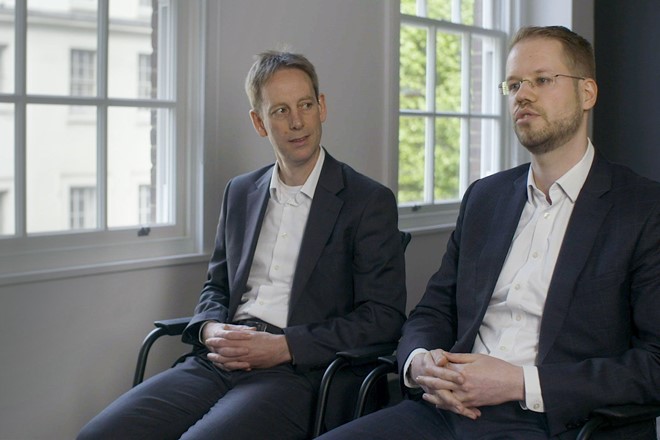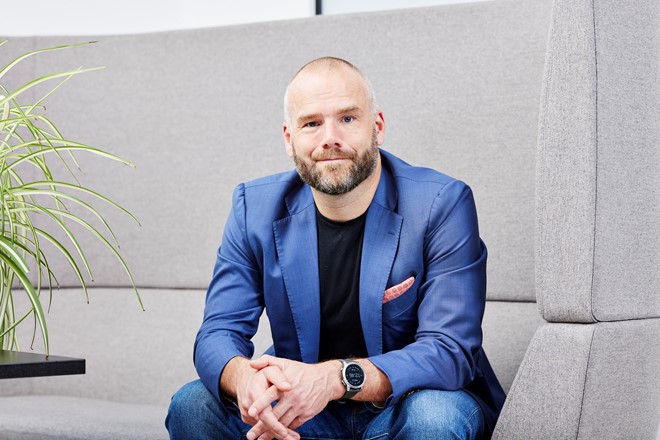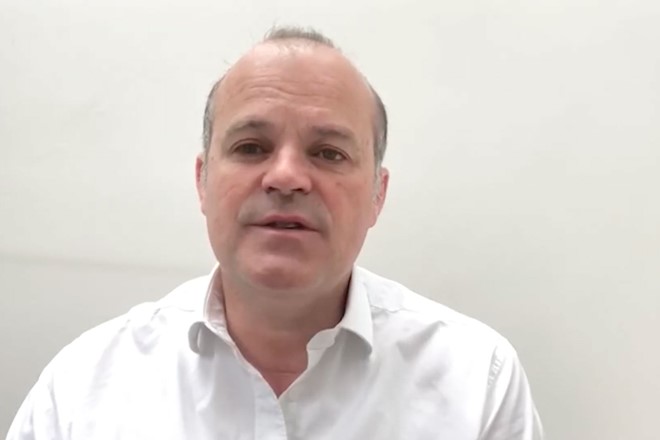
John Tsai, MD, Executive Partner at Syncona Investment Management Limited, joined Syncona in May 2023 from Novartis AG where he was President, Global Drug Development and Chief Medical Officer. At Syncona, he works closely with portfolio companies as they navigate the clinical pathway, utilising his 25 years of experience in bringing innovative therapies to market across geographies and therapeutic areas. This also involves taking executive roles at select portfolio companies such as the appointment of John as the Chief Executive Officer of Forcefield Therapeutics in September 2023 and Executive Chair at SwanBio Therapeutics in October 2023. Here John discusses his return to the front line of innovation, working hands on with early-stage biotech after years as an executive in big pharma.
A big jump from big pharma
After two decades in big pharma, I felt it was time for a new challenge in my career where I could be more directly involved in the advancement of novel therapeutics. I decided to join Syncona because of the breath of the portfolio and an unmissable opportunity to reconnect with the nitty gritty and day-to-day of medical innovation. I am trained as a medic and am an executive by experience, so it’s been thoroughly enjoyable putting both skills and passions to the test over the last 10 months.
Biotech and pharma enjoy a symbiotic relationship that forms the backbone of a vibrant life sciences ecosystem. Biotechs thrive on focus and the ability to advance scientific ideas while pharma have the power of resources and execution. My experiences on both side allow me to see the distinctive roles they both play, where they both excel, and how much they have to learn from one another. It’s this perspective that I’ve been bringing to the table at Syncona.
At Novartis I was responsible for leading the company's development portfolio spanning 160 projects and 500 clinical trials as well as the team that secured global approvals for 15 new medicines including treatments using gene therapy, cell therapies, and new advanced platforms. The fantastic thing about big pharma is the scale of its resources, in terms of people, capital and infrastructure. This means that big pharma can really drive de-risked products through late-stage development and commercialisation. I learnt a huge amount about the clinical development process across a wide range of therapeutics areas and modalities, whilst also having the opportunity to work alongside many dedicated and talented people.
Transition to early-stage biotech
Whilst big pharma plays a valuable role particularly in the late clinical stages and commercialisation of a well-defined product, the frontier of science and innovation remains at small biotechs. This is what I wanted to get back to, using everything I had learned over my career to help drive this innovation forward. My move to Syncona, and subsequent appointment as CEO of Forcefield Therapeutics, offered me the opportunity to return to the forefront of innovation and the raw science.
Biotech companies, by their very nature, are typically at an early-stage which mean they are small and nimble. This is a huge benefit as it allows biotechs to move and course correct rapidly – absolutely crucial for a business where the entire company is focusing on a single asset and you don’t have the resources of a big pharma. As a result, a small biotech naturally creates a culture of ambition, motivation, and a ‘do or die’ mentality, stemming from a strategic mindset where teams play to win, with an entire dedicated team singularly focused on one specific target or sometimes a single asset.
In big pharma you can leverage significant resources to drive towards making progress in a defined area. In a small biotech everyone has the entire scope of the complete project – from discovery to clinical entry, and beyond. This all-inclusive view is hugely engaging and a great environment to develop yourself, where you can connect with every single function and employee of the company.
What have you been doing at Syncona?
When I was looking for a new opportunity, I had a few key criteria. Firstly, I wanted to be focused on cutting edge technologies that can truly make a difference to patients. Secondly, I wanted to be working with emerging science that has the potential to progress all the way from academia to commercialisation. And, finally, I wanted to work with a team of fun and intelligent people, who are all empowered to bring ideas to the table day in and day out. Syncona ticked all of these boxes and it’s fulfilled all of my expectations so far.
Through my Executive Partner role at Syncona I have been able roll up my sleeves with a promising portfolio of young biotech companies, alongside an outstanding team of investment partners. One company that really stood out to me was Forcefield Therapeutics, which is looking to revolutionise the treatment of heart attacks. Heart disease is the world’s number one killer and, after seeing it’s differentiated approach to combatting heart attacks, I threw myself in at the deep end as CEO. Forcefield Therapeutics is founded on exceptional science, and I’m honoured to be leading its excellent team towards the clinic.
Meanwhile, I’ve also been getting involved in the growth of other portfolio companies developing life-changing therapies, such as SwanBio Therapeutics through my Executive Chair role. My role allows me to utilise my experience from big pharma to support portfolio companies as they navigate the clinical pathway, whilst helping the Syncona team to evaluate exciting new investment opportunities. It’s been a great challenge, and I’m just getting started.
Advantages for the industry
My transition from big pharma to biotech has only underscored their differences and the need for both in the pursuit of medical innovation, which will never be one size fits all. A combination benefits the industry, and collaborations between pharma and smaller biotechs are also a great way of helping to drive a drug through the development process, especially within what continues to be a difficult funding environment. We have seen this throughout the Syncona portfolio, with the continued flow of capital, ideas and people between big pharma and smaller biotechs being something that continues to benefit drug development and patients worldwide.
There are challenges and advantages inherent in each subsector. Big pharma certainly has the fire power, scale and expertise to effectively commercialise late-stage products and get them to patients quickly. By comparison, biotech’s focused, dedicated and nimble approach facilitates a faster pace of innovation in the early stage of scientific translation. The premise of Syncona is to bridge this gap by providing promising biotech with the expert guidance and expert capital required to navigate the clinical pathway and bring new medicines to patients. I am seeing this first hand in my new role and look to leverage my perspective from both sides of the fence as I help shape the future of Syncona and its portfolio.


